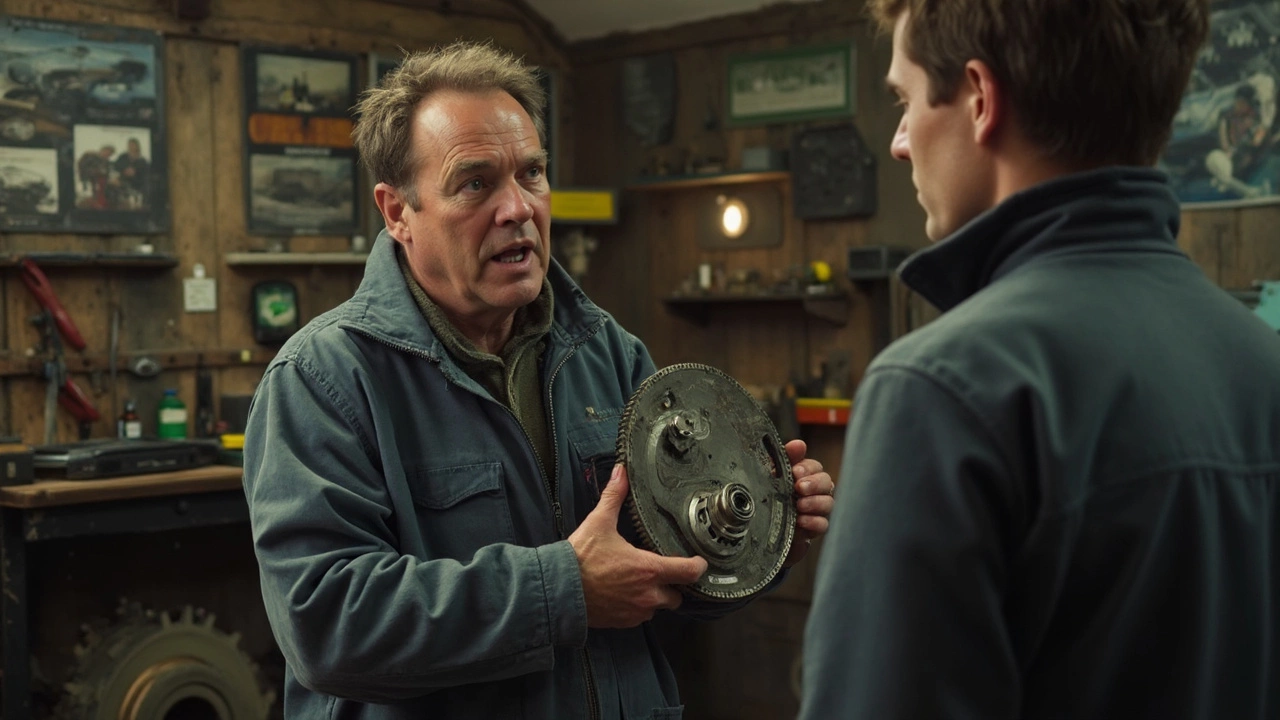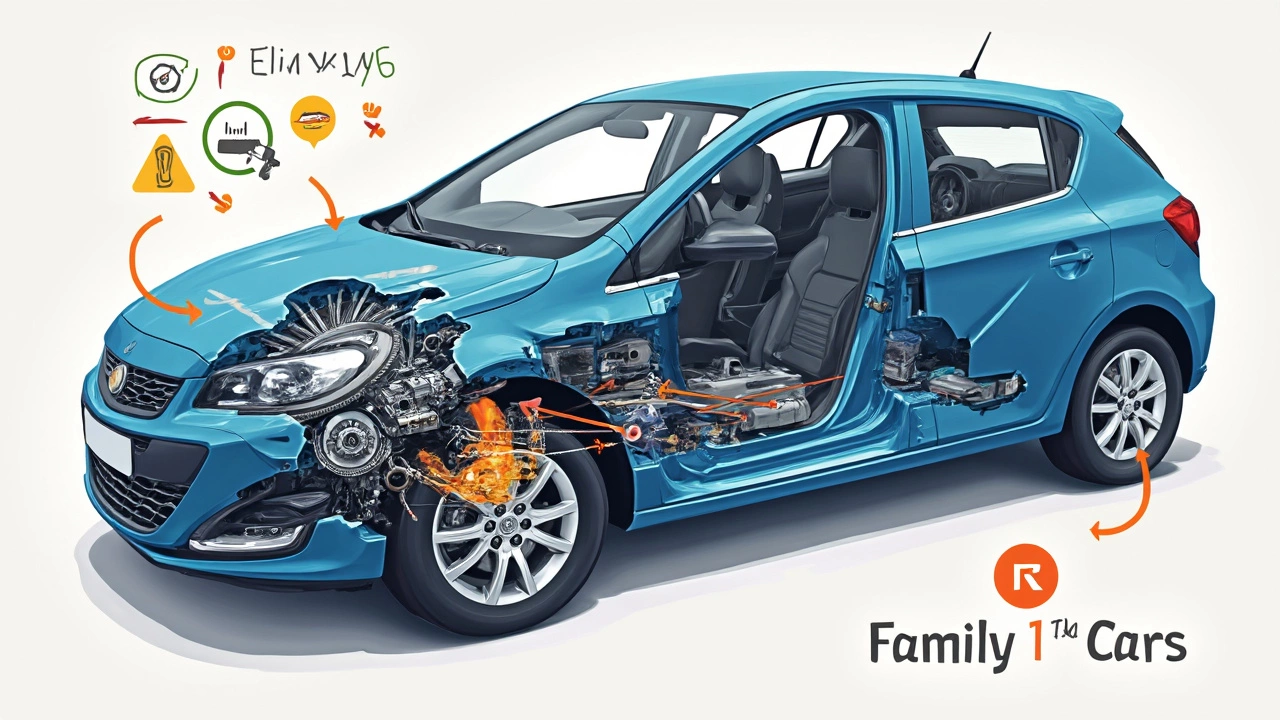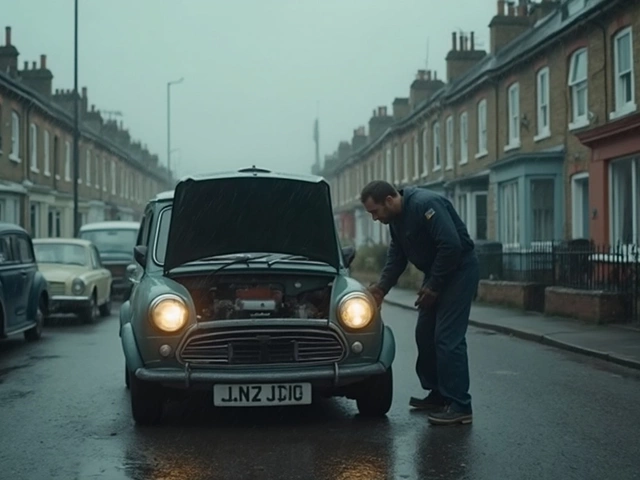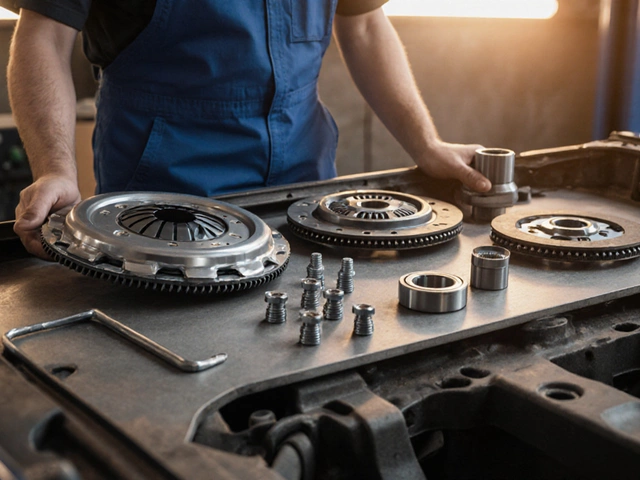The UK is famous for its roundabouts and stop-start traffic. But if you drive stick, there’s one thing you never want to get stuck with in a jam—the unmistakeable feeling that something’s up with your clutch or flywheel, just as you try to pull away. It creeps up slowly for some, and for others, it goes from smooth to disaster in a blink. Here’s a fact that might surprise you: The majority of clutch failures could be avoided if drivers recognized the symptoms earlier.
Your car might give you subtle hints weeks or months before you’re grounded and shelling out hundreds for towing. Some ignore the vibrations, others shrug off slipping and odd burning smells. Not a good plan. Spotting trouble signs early—and understanding what each means—will save you plenty of stress and a stack of cash.
Spotting the Early Signs: What Your Car Is Trying to Tell You
Your clutch is your car’s handshake with the gearbox. When it works, you hardly notice it. But when things go south, your car’s behaviour changes. Let’s get practical: ever tried to accelerate and felt the engine revving up, but the car just doesn’t go any faster? That’s classic clutch slip. Many drivers think their car’s lost power, but it’s more likely your clutch is worn thin, struggling to grip, and costing you performance and fuel.
Now, about the symptoms of bad flywheel. This one’s tricky because a faulty flywheel can disguise itself as a clutch problem or even mimic a dodgy engine mount. If you feel vibrations—think of a rattly old washing machine at higher RPMs—your flywheel could be to blame. A healthy flywheel keeps your engine running smoothly, almost like a big spinning balance wheel. When it goes out of shape, shakes and noises come with the territory.
Let’s put it in clear terms. If you notice:
- A pronounced burning smell, especially after heavy acceleration or climbing hills. That’s friction, and your clutch shouldn’t give off that aroma.
- Struggling to get the car into gear, especially reverse or first? That crunch means the clutch isn’t disengaging fully, often a sign of severe wear.
- Pulsing, juddering, or chattering when you let off the clutch pedal—imagine your car trying to break into a salsa dance when you’re just pulling away from the Tesco car park.
- Loud grinding, scraping noises, especially during gear changes. Sometimes, drivers say it feels like you’re fighting the gearbox itself.
- Your clutch pedal feels different. It might go stiff, stick to the floor, or suddenly become floppy. Don’t ignore changes in feedback. The pedal tells you a lot about your system’s health.
Right here in Manchester, one local garage reports that nearly half of the clutch replacements they do show obvious signs of trouble—yet the owners kept driving until total failure. The lesson? Listen to your car. Regular clutches usually last up to 60,000 miles, but aggressive driving or city traffic can shred that down to 30,000 miles or less.

Digging Deeper: Why Clutches and Flywheels Fail
The clutch has a tough life. Every time you change gear, the friction material on your clutch plate wears a little. Do enough stop-start journeys and you’ll speed up that process. But the big silent killer? Riding the clutch. Keeping your foot half-pressed on the pedal at traffic lights or during parking is a massive wear accelerator. I know it’s tempting on steep hills, but that constant pressure burns out the friction surface way faster than you’d hope.
Let’s look at the flywheel next. Most modern cars use a dual-mass flywheel (DMF). These are brilliant for making manual gearboxes feel buttery smooth—but they come with a catch: When they go bad, symptoms multiply and repair bills climb. DMFs use internal springs and dampers to cut vibrations, but heavy acceleration, towing, or simply racking up the miles wears them down. Over time, those springs loosen or break, leaving the flywheel unbalanced.
Some common reasons a flywheel will fail:
- High miles, usually over 100,000, but I’ve seen plenty fail at 70k if driven hard.
- Rough engagement, especially if you tend to dump or drop the clutch suddenly.
- Engine overheating or oil leaks, which can contaminate the flywheel and clutch surface, cutting their lifespan in half.
- Poor clutch replacement jobs—if the flywheel isn’t properly balanced or resurfaced after swapping a clutch, problems will return much faster.
| Component | Average Lifespan (Miles) | Replacement Cost (GBP) |
|---|---|---|
| Clutch Plate | 30,000 - 60,000 | £350 - £600 |
| Dual Mass Flywheel | 80,000 - 100,000 | £600 - £1,000 |
| Solid Flywheel (older cars) | 100,000+ | £300 - £500 |
Clutch cables and hydraulic systems can also go wrong. If yours is feeling spongy and you’re topping up the brake fluid constantly, it might be a leaky clutch slave cylinder or master cylinder—common on older Fords, Vauxhalls, and Peugeot models. Sometimes it’s just the rubber cable stretching. Always get leaks and odd pedal feel checked quickly or risk total loss of drive.
Here’s a practical hint: If you’re ever trying to diagnose a clutch at home, try this. With the handbrake fully on, press the clutch, put it in a high gear like 4th or 5th, and gently let out the clutch. If the car doesn’t stall, your clutch is badly worn and slipping. If it stalls sharply, you’re probably safe for now. Of course, don’t try this repeatedly—once is enough and don’t use it as a substitute for a proper inspection.

What to Do When Things Go Wrong—and How to Save Yourself Money
If you think your clutch is going or your flywheel sounds like a bag of bolts, don’t wait for the tow truck moment. The sooner you catch problems, the less you’ll spend. Clutch replacement is labour-intensive; the gearbox has to come out, so many garages will suggest replacing the flywheel at the same time. It is more up-front, but since the biggest cost is the labour, you don’t want to pay twice in quick succession.
Always get a quote that includes new hydraulics (master and slave cylinders), especially if your car is high mileage. Some garages cut corners here, but a leaky hydraulic system will ruin any new clutch.
- Insist on a new clutch kit, not just a single part – clutch disc, pressure plate, and release bearing should all be changed together.
- If your car’s flywheel is solid, you might dodge a big bill. But with dual-mass, replacement is nearly always recommended if the clutch is going out.
- Ask for your old parts back. If you see grooves, small cracks, or uneven wear on the flywheel, that's proof right there.
- Check if the garage uses manufacturer-approved parts. Cheap pattern components fail early.
Want to avoid doing this job more than necessary? Drive as if you’re getting marked for smoothness, not speed. Hold the clutch all the way down when changing gear, avoid sitting at the lights with your foot on the clutch, and never use it to hold the car on a hill—use the brake. These little habits add thousands of miles to your clutch life.
If you’re handy with spanners and thinking about tackling this job yourself, brace yourself for a heavy, awkward day. You’ll need a jack, axle stands, and ideally a mate with another set of hands. On most front-wheel-drive cars, expect to dismantle half the front suspension just to get the gearbox out. And if the flywheel has gone bad, don’t just swap the clutch and bolt everything back. A rough flywheel surface will shred a new clutch in no time, so get it resurfaced at a machine shop or replace it completely.
Modern tech makes diagnosis easier. Mechanics now use inspection cameras to look at the clutch through tiny holes in the bellhousing. Noise sensors can pinpoint if a vibration is from the flywheel or another rotating bit. Ask for a specialist diagnosis if you’re not sure what’s up. It might cost a few quid, but it will save the headache of paying for the fix twice.
Every year, thousands of drivers across the UK get caught out with sudden clutch and flywheel failure. What tends to sting the most? The repair bill, the sudden breakdown, and the hassle of being stranded. But those disasters all start as a faint judder, a whiff of burning, a struggling clutch pedal—easy to shrug off until it’s too late.
When your clutch or flywheel starts talking, don’t ignore it. Listen, act quickly, and you might avoid a breakdown at the wrong time. Your car—and your wallet—will thank you on your next smooth drive through Manchester’s city centre.

